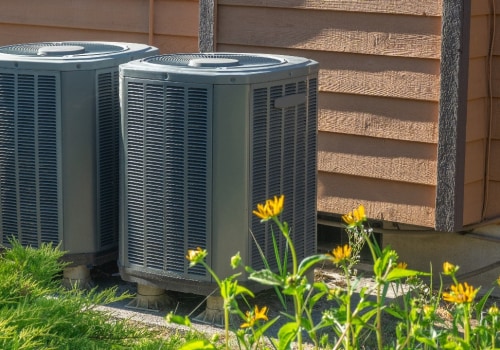Are you looking for the best thermostat to control your home's heating and cooling system? With so many options available, it can be difficult to know which one is right for you. Electronic thermostats are the most common type of thermostat used in homes today, and they work with most heating and cooling systems, including electrical, oil, gas, and hydronic systems, as well as air conditioners. When selecting a thermostat, it's important to look for one that is large and easy to read, with a backlit display. It should also allow you to set the temperature you want to maintain in your home.
Other features to consider include the ability to turn the system fan on and off, control the air conditioner or oven, and check the current temperature from a comfortable place. Electronic thermostats act like miniature computers when they detect the ambient temperature in your home. They offer more precise control of your air conditioning system to reduce your carbon footprint, reduce your home's energy consumption, and save money. With some research, you can find a thermostat that can keep your energy bills to a minimum.
Depending on the time of year, you'll need a reliable air conditioning system to keep your home comfortable and indoor air fresh.
Google Nest
thermostats are popular options for controlling your HVAC system. The most basic Google Nest thermostat won't work if you have a heat pump with a high and low temperature setting (two-stage heat pump), but the Google Nest Learning thermostat will. Some of the user interface improvements created for smart thermostats have also been extended to unconnected programmable thermostats, making some of them an easier to use option for consumers who don't want a model with an internet connection. Smart thermostats also offer machine learning and automation features that allow them to learn your habits and routines to adjust temperatures for you. Ecobee was a pioneer when its smart thermostats started using wireless remote temperature sensors, which can be placed in areas remote from the thermostat to more accurately heat and cool rooms that might be too hot or too cold. thermostat will. Some of the user interface improvements created for smart thermostats have also been extended to unconnected programmable thermostats, making some of them an easier to use option for consumers who don't want a model with an internet connection. Smart thermostats also offer machine learning and automation features that allow them to learn your habits and routines to adjust temperatures for you. Ecobee was a pioneer when its smart thermostats started using wireless remote temperature sensors, which can be placed in areas remote from the thermostat to more accurately heat and cool rooms that might be too hot or too cold.However, keep in mind that smart thermostats may have limitations in terms of the type of climate systems they complement. To maximize energy savings and ensure comfort in your home, contact your local power company as they may offer discounts or incentives when buying new thermostats. With some research and careful consideration of your needs, you can find the perfect thermostat for your HVAC system.



